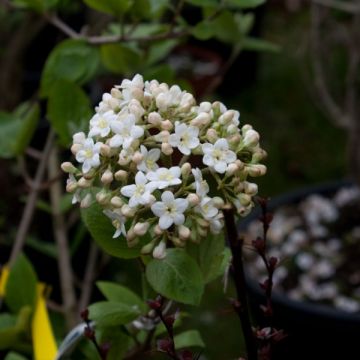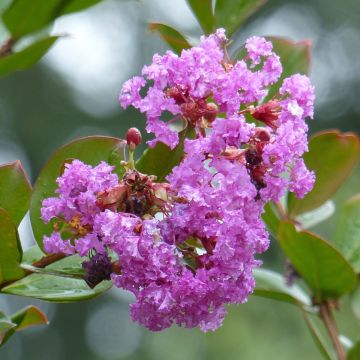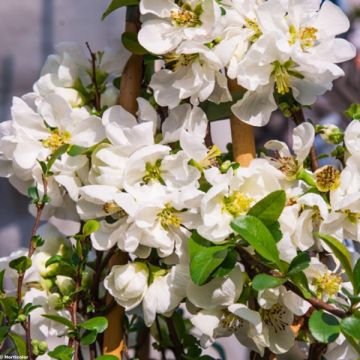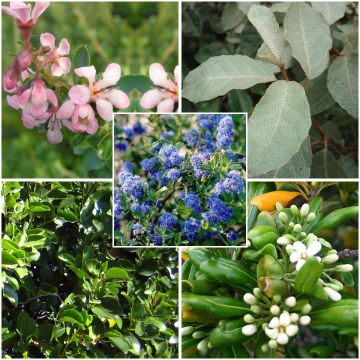

Viburnum Le Bois Marquis


Viburnum Le Bois Marquis


Viburnum Le Bois Marquis


Viburnum Le Bois Marquis


Viburnum Le Bois Marquis


Viburnum Le Bois Marquis


Viburnum Le Bois Marquis


Viburnum Le Bois Marquis


Viburnum Le Bois Marquis


Viburnum Le Bois Marquis
Viburnum Le Bois Marquis
Viburnum Le Bois Marquis®
Received in early May 2023, the plant has not been growing since it was placed in the pot, even though its growth should be rapid according to the information on the website. Naturally disappointed.
Emma, 23/02/2024
Why not try an alternative variety in stock?
View all →This plant carries a 24 months recovery warranty
More information
We guarantee the quality of our plants for a full growing cycle, and will replace at our expense any plant that fails to recover under normal climatic and planting conditions.
From €5.90 for pickup delivery and €6.90 for home delivery
Express home delivery from €8.90.
From €5.90 for pickup delivery and €6.90 for home delivery
Express home delivery from €8.90.

Does this plant fit my garden?
Set up your Plantfit profile →
Description
The Viburnum 'Le Bois Marquis' is a recent variety of viburnum, found in France, at the Le Bois Marquis arboretum, and awarded at Courson in 2007 for its interesting ornamental qualities throughout the year. This beautiful bush, semi-evergreen in cold climates, develops visible red wood in winter and bears young bronze leaves in spring, which take on a superb coppery red colour in autumn and winter. Its spring flowers, in white-pink clusters, are followed by red berries that turn black when ripe. This dense variety well-branched from the base is an excellent bush that also adapts very well to cultivation in large pots.
The Viburnum 'Le Bois Marquis' is a hybrid viburnum belonging to the caprifoliaceae family. It is a bush with an upright and rounded habit, growing densely and highly branched from the base. It has a fast growth rate and will reach about 2.50m (8ft) in height and 2m (7ft) in width at maturity. Its foliage is evergreen, semi-evergreen below -15°C, changing colour throughout the seasons. Its oval and lanceolate leaves are glossy, tinted bronze in spring, and red-copper to purple in autumn. The flowering takes place in late spring, in the form of small clusters of white flowers tinged with red, which will produce black fruits when ripe, highly appreciated by birds in winter. This Virburnum is easy to maintain. Pruning should be avoided.
This easy-to-grow bush is content with ordinary garden soil if not too dry. It will fit well in a natural hedge, which it will help structure, along with other viburnums cultivated for their fragrance (Viburnum x bodnantense or V. fragrans) or for their autumn foliage (Viburnum sargentii Onondaga or V. tomentosum). In flower beds, it can be associated with tulips. Its dense and well-maintained habit and presence throughout the year, allow it to contribute to the decoration of the terrace, in a large pot with grasses, dwarf conifers, or ground cover plants.
Report an error about the product description
Viburnum Le Bois Marquis in pictures


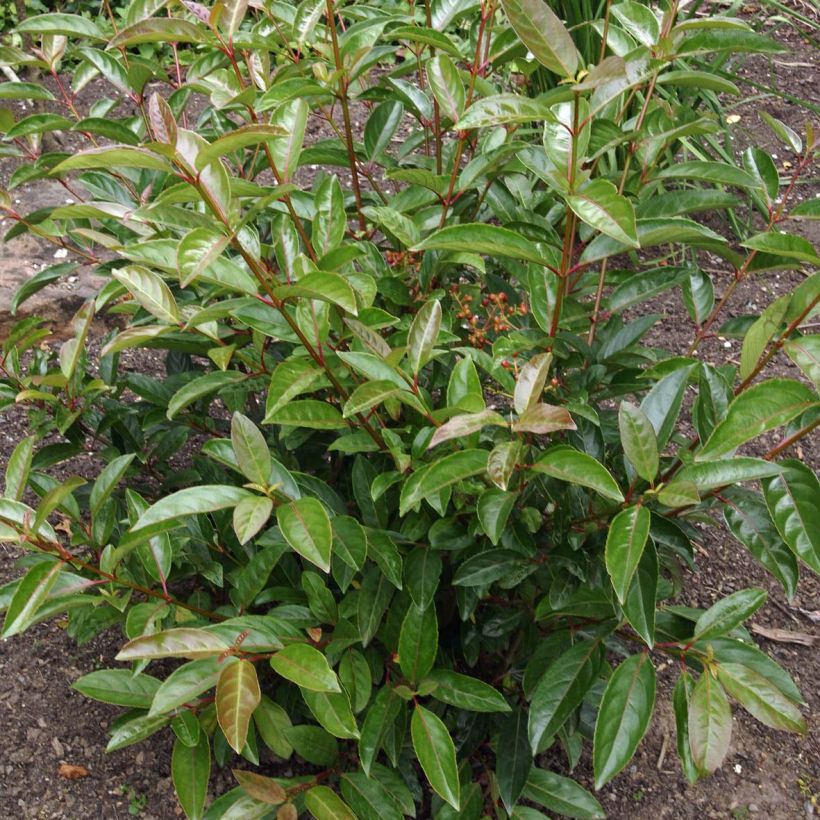



Plant habit
Flowering
Foliage
Botanical data
Viburnum
Le Bois Marquis®
Caprifoliaceae
Cultivar or hybrid
Other Viburnum
Planting and care
The Viburnum 'Le Bois Marquis' can be planted on its own for its elegant habit and the beauty of its foliage, persistant down to -15°C (5°F) or as a natural hedge. This viburnum can be planted in full sun, partial shade, or even full shade. It does not have any particular soil requirement (acidic, neutral, or alkaline) and it is hardy. However, it prefers soil that remains fairly moist, even if it is rich in clay and heavy, and will need watering during the first summers to help it establish. Avoid pruning it to preserve its natural spherical habit.
Planting period
Intended location
Care
-
, onOrder confirmed
Reply from on Promesse de fleurs
Hedge shrubs
Haven't found what you were looking for?
Hardiness is the lowest winter temperature a plant can endure without suffering serious damage or even dying. However, hardiness is affected by location (a sheltered area, such as a patio), protection (winter cover) and soil type (hardiness is improved by well-drained soil).

Photo Sharing Terms & Conditions
In order to encourage gardeners to interact and share their experiences, Promesse de fleurs offers various media enabling content to be uploaded onto its Site - in particular via the ‘Photo sharing’ module.
The User agrees to refrain from:
- Posting any content that is illegal, prejudicial, insulting, racist, inciteful to hatred, revisionist, contrary to public decency, that infringes on privacy or on the privacy rights of third parties, in particular the publicity rights of persons and goods, intellectual property rights, or the right to privacy.
- Submitting content on behalf of a third party;
- Impersonate the identity of a third party and/or publish any personal information about a third party;
In general, the User undertakes to refrain from any unethical behaviour.
All Content (in particular text, comments, files, images, photos, videos, creative works, etc.), which may be subject to property or intellectual property rights, image or other private rights, shall remain the property of the User, subject to the limited rights granted by the terms of the licence granted by Promesse de fleurs as stated below. Users are at liberty to publish or not to publish such Content on the Site, notably via the ‘Photo Sharing’ facility, and accept that this Content shall be made public and freely accessible, notably on the Internet.
Users further acknowledge, undertake to have ,and guarantee that they hold all necessary rights and permissions to publish such material on the Site, in particular with regard to the legislation in force pertaining to any privacy, property, intellectual property, image, or contractual rights, or rights of any other nature. By publishing such Content on the Site, Users acknowledge accepting full liability as publishers of the Content within the meaning of the law, and grant Promesse de fleurs, free of charge, an inclusive, worldwide licence for the said Content for the entire duration of its publication, including all reproduction, representation, up/downloading, displaying, performing, transmission, and storage rights.
Users also grant permission for their name to be linked to the Content and accept that this link may not always be made available.
By engaging in posting material, Users consent to their Content becoming automatically accessible on the Internet, in particular on other sites and/or blogs and/or web pages of the Promesse de fleurs site, including in particular social pages and the Promesse de fleurs catalogue.
Users may secure the removal of entrusted content free of charge by issuing a simple request via our contact form.
The flowering period indicated on our website applies to countries and regions located in USDA zone 8 (France, the United Kingdom, Ireland, the Netherlands, etc.)
It will vary according to where you live:
- In zones 9 to 10 (Italy, Spain, Greece, etc.), flowering will occur about 2 to 4 weeks earlier.
- In zones 6 to 7 (Germany, Poland, Slovenia, and lower mountainous regions), flowering will be delayed by 2 to 3 weeks.
- In zone 5 (Central Europe, Scandinavia), blooming will be delayed by 3 to 5 weeks.
In temperate climates, pruning of spring-flowering shrubs (forsythia, spireas, etc.) should be done just after flowering.
Pruning of summer-flowering shrubs (Indian Lilac, Perovskia, etc.) can be done in winter or spring.
In cold regions as well as with frost-sensitive plants, avoid pruning too early when severe frosts may still occur.
The planting period indicated on our website applies to countries and regions located in USDA zone 8 (France, United Kingdom, Ireland, Netherlands).
It will vary according to where you live:
- In Mediterranean zones (Marseille, Madrid, Milan, etc.), autumn and winter are the best planting periods.
- In continental zones (Strasbourg, Munich, Vienna, etc.), delay planting by 2 to 3 weeks in spring and bring it forward by 2 to 4 weeks in autumn.
- In mountainous regions (the Alps, Pyrenees, Carpathians, etc.), it is best to plant in late spring (May-June) or late summer (August-September).
The harvesting period indicated on our website applies to countries and regions in USDA zone 8 (France, England, Ireland, the Netherlands).
In colder areas (Scandinavia, Poland, Austria...) fruit and vegetable harvests are likely to be delayed by 3-4 weeks.
In warmer areas (Italy, Spain, Greece, etc.), harvesting will probably take place earlier, depending on weather conditions.
The sowing periods indicated on our website apply to countries and regions within USDA Zone 8 (France, UK, Ireland, Netherlands).
In colder areas (Scandinavia, Poland, Austria...), delay any outdoor sowing by 3-4 weeks, or sow under glass.
In warmer climes (Italy, Spain, Greece, etc.), bring outdoor sowing forward by a few weeks.






















































